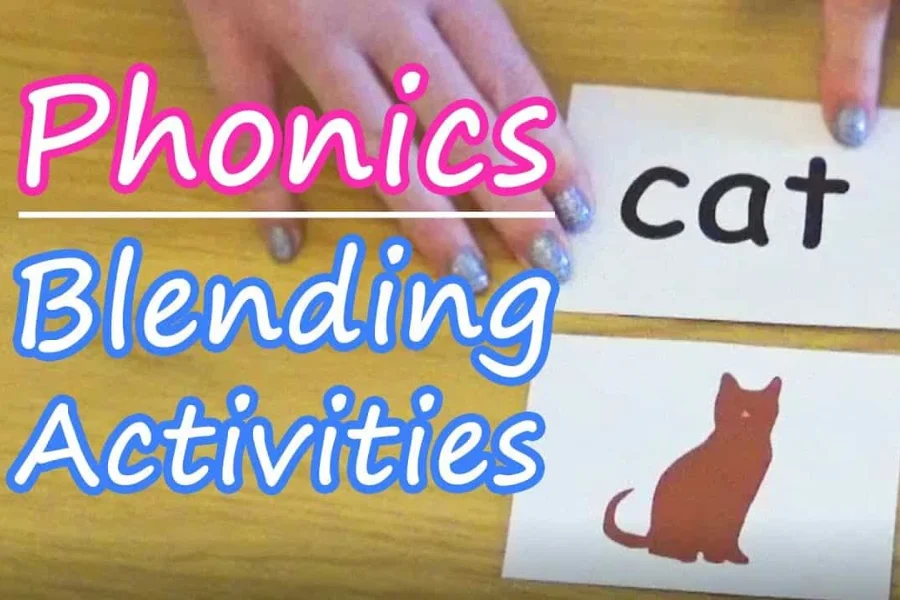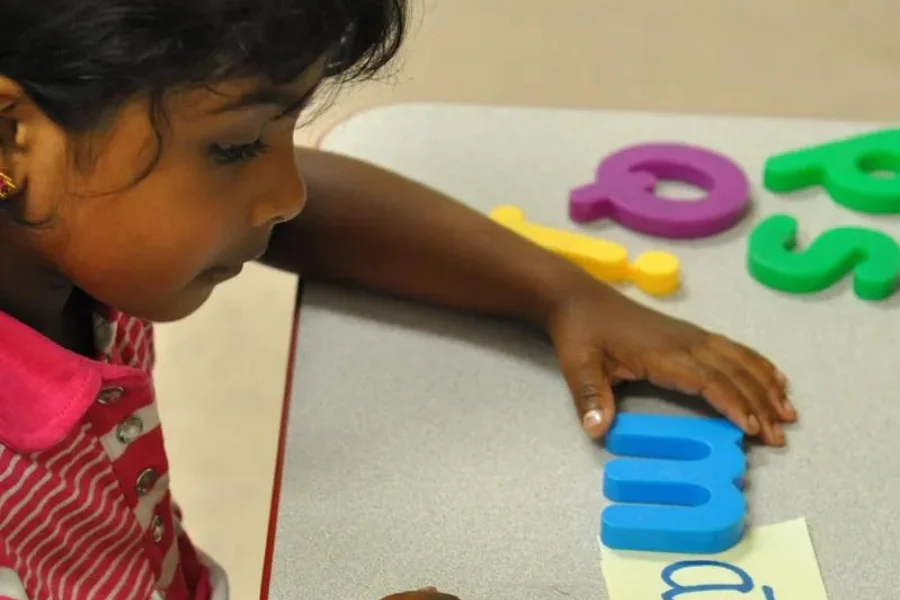Phonics Blending

Source: mammamia
Phonics Blending
Phonics Blending, a crucial technique, helps young learners connect individual sounds (phonemes) to make words. It acts as a bridge between recognizing letters and reading fluently. Teaching Phonics Blends to children helps them interpret unfamiliar words, improving both their reading command and spelling abilities.
This foundational skill empowers children to understand new vocabulary confidently and cultivates a fondness for reading at an early age. With effective Phonics Blends, teachers can set the stage for strong literacy advancement, making it a key aspect of early reading.
Table of Content
For more details of Phonics Course Call / Whatsapp +919869866277/+919869546913
To Download Brochure of Phonics Course, Click Here!

Source: algeria
What is Blending?
Blending is the process of combining individual sounds, or phonemes, together to pronounce a word. For instance, Blending of the sounds /b/, /a/, and /t/ forms the word ‘bat’. Phonics Blending is integral to reading because it helps children break words into small parts and then join them again to read the complete word.
How Do We Teach Blending?
Teaching Phonics Blends involves a systematic and stepwise approach that progressively builds a child’s ability to identify and join sounds.
Here’s how We Teach Blending:
Begin with Easy Words
Begin with easy CVC (consonant-vowel-consonant) words like ‘cat,’ ‘dog,’ ‘sun,’ etc. which are easy to blend for new learners.
Use Multimedia Resources
Using multimedia aids such as flashcards, alphabet charts, and digital tools allows children to see the letters and hear their corresponding sounds. This multisensory method strengthens the association between sounds and letters.
Model Phonics Blending
Show how to blend sounds by saying each sound slowly and then steadily speeding up to form the word. For example, start with /c/…/a/…/t/ and then blend them to say “cat.”
Practice with Repetition
Repetition is key in Phonics Blends. Consistent practice through reading simple books, playing word games, or using Blending worksheets helps solidify the skill.
Motivate Independent Blending
As children become more confident, motivate them to blend sounds independently. Provide them with exercises where they can apply their blending skills and read simple texts.
Tips to Help the Blending
Sometimes, children may find it problematic to connect the sounds easily and struggle with Phonics Blends,
Here are some Tips to Help the Blending:
Slow Down the Process
If a child is struggling with Phonics Blends, slow down the process. Encourage them to say each sound clearly and then gradually increase the speed to connect the sounds.
Use Elongation
Elongating the sounds can help children hear how they fit together. For instance, in the word “cat,” you might say /cccc/…/aaaa/…/tttt/ to make it easier for the child to blend.
Play Blending Games
Turn blending practice into a game. Use toys or objects that relate to CVC words and ask the child to blend the sounds and name the object. For instance, show a picture of a ‘mat’ and ask the child to blend the sounds /m/, /a/, and /t/ to say the word.
Include Rhymes
Make blending more instinctive by including Rhyming Words. Words like ‘bat,’ ‘cat,’ ‘hat,’ etc., all share a common sound, making it simpler for children to combine new words once they are acquainted with the pattern.
Give Instant Feedback
Give instant positive feedback when a child successfully blends sounds. This reinforcement helps them build confidence in their blending abilities.
Use Examples and Non-Examples
To illustrate the blending process, give clear examples. For instance, show how blending works with a simple word like “mat” (/m/ + /a/ + /t/ = mat) and then provide a non-example by saying the sounds incorrectly, such as /m/…/a/…/p/, to show that it does not make a real word.
For more details of Phonics Course Call / Whatsapp +919869866277/+919869546913
To Download Brochure of Phonics Course, Click Here!

Source: vickialford
Practical Example of Blending in Action
Let’s take a closer look at Practical Example of Blending in Action:
Let’s visualize you’re teaching a child the word ‘jug.’ Start by splitting the word down into its discrete sounds: /j/…/u/…/g/. First, say each sound slowly and separately. Then, encourage the child to repeat the sounds after you. Gradually speed up the process until the sounds blend smoothly to form the word ‘jug.’ The child might begin with something like /j/…/u/…/g/ and, with practice, will soon be able to say ‘jug’ on its own.
With the use of the correct approach, letters Blending, a technique that necessitates patience and practice, becomes a realistic part of a child’s reading toolkit. Concentrating on clear, steady practice and providing helpful feedback, helps Teachers Assist Children in mastering this vital skill, paving the way for their future reading success.
Phonics Training for Teachers
Phonics Teachers Course, an essential aspect of early literacy, trains educators with the skills and knowledge needed to cultivate a passion for the English language in their students.
Vidhyanidhi Education Society (Govt. Regd.) offers a complete Phonics Course that is designed to empower teachers with effective strategies and techniques for teaching phonics.
Let’s see what makes Phonics Training for Teachers so important:
Creating a Fun Learning Environment
One of the benefits of Phonics Teachers Course is the ability to fill the learning space with a fun and engaging learning vibe. Games, interactive exercises, and innovative teaching approaches help teachers make phonics lessons entertaining. This also motivates them to develop a lifelong fondness for reading.
Mastering Literacy Skills
With Phonics training, teachers can easily introduce essential phonics concepts to students using a variety of phonological activities. By involving students in activities such as sound matching, and segmenting, teachers can assist them develop robust literacy skills. These skills form the basis for reading and writing, enabling students to interpret words and understand texts more efficiently.
Reading and Writing Enhancement
Phonics Teachers Course plays an important role in refining students’ reading and writing aptitudes. Teachers can help them become more confident and expert readers and writers by teaching Blending and segmenting. Through this training teachers are well-resourced to guide their students through the intricacies of language, leading to better academic results.
Identifying Diverse Learning Needs
Phonics Training for Teachers trains educators with the strategies to identify and adapt to different learning styles of students. Teachers can design their instruction techniques to meet each student’s learning needs by understanding their diverse learning requirements. This tailored approach helps ensure that all students, irrespective of their learning style, can flourish in their phonics education.
With Vidhyanidhi Education Society’s (Govt. Regd.) Phonics Teacher Training Course, ambitious teachers master all the tools and tactics needed to outshine in teaching phonics. This course helps teachers improve their ability to create attractive lessons, assist diverse learners, and boost their students’ literacy results. Proper training allows teachers to make a noteworthy impact on their student’s reading and writing capabilities, thus laying the foundation for their future academic achievements.
Master Vidhyanidhi Education Society’s Phonics Course!
For more details of Phonics Course Call / Whatsapp +919869866277/+919869546913
To Download Brochure of Phonics Course, Click Here!
FAQs
What is the Duration of Phonics Course?
The duration of a Phonics Course is typically a few days, depending on the program and the level of depth covered.
How to Learn Phonics as a Teacher?
You can learn phonics as a teacher through specialized training programs offered by Vidhyanidhi Education Society, which provides all-inclusive phonics instruction practices.




